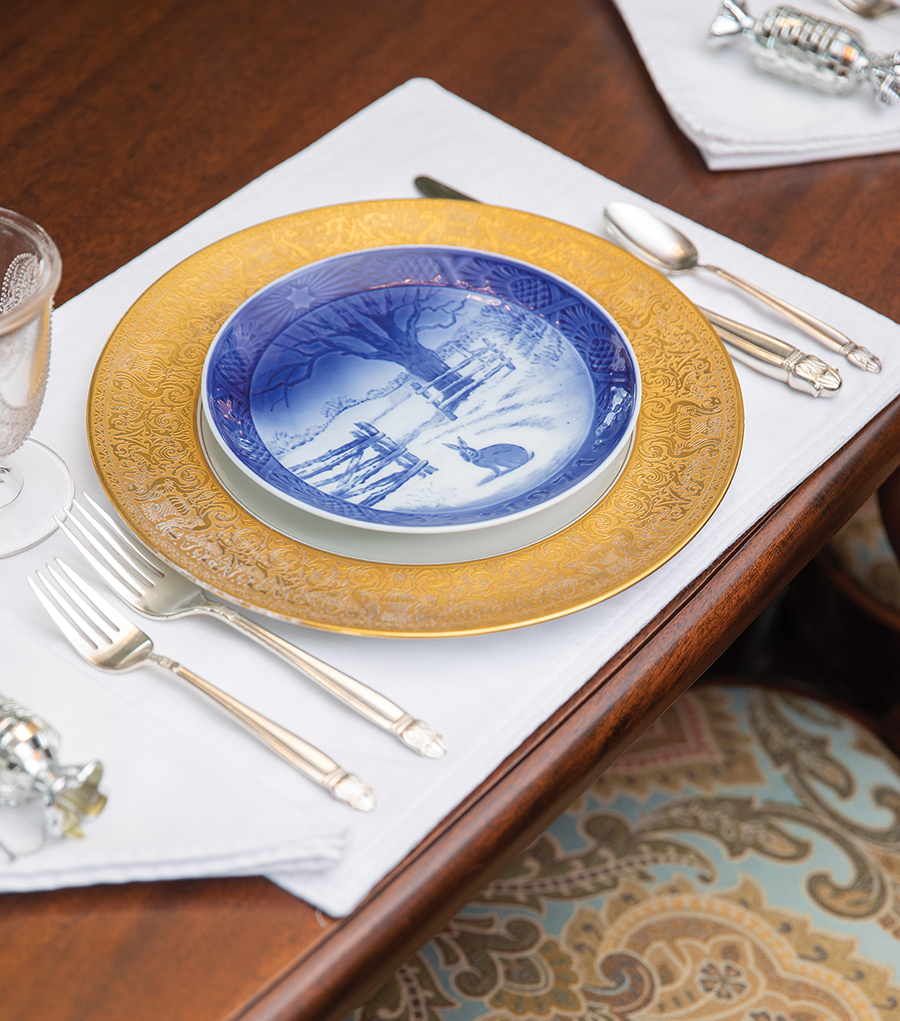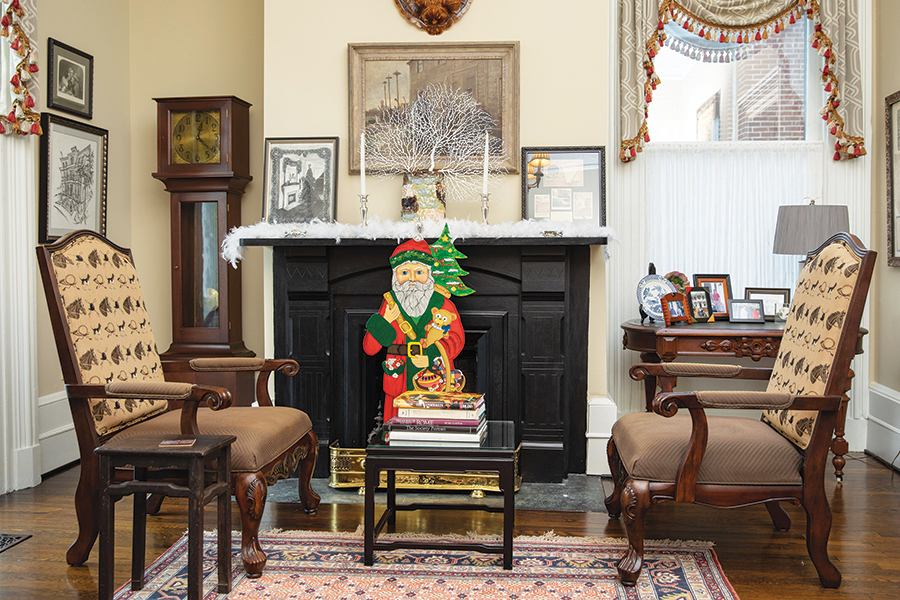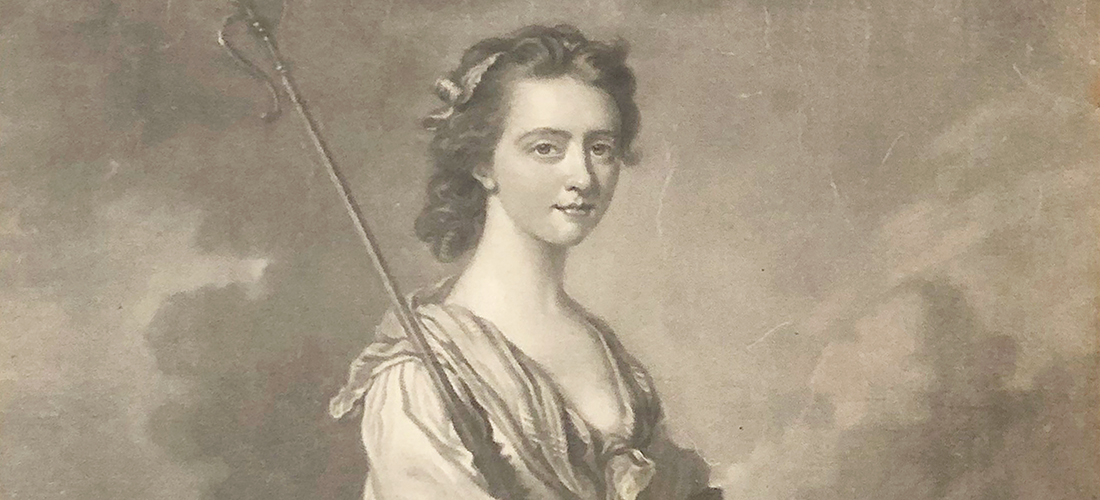Despite the ravages of fire and Florence, The Verandas still holds pride of place in the historic district
By William Irvine • Photographs By Andrew Sherman
Chuck Pennington and his partner, Dennis Madsen, had a dilemma: They were looking for a new place to call home and open a bed-and-breakfast. It was the mid-1990s. After visiting various scenic and recommended towns from Ogunquit, Maine, to Asheville, they were still not finding what they wanted. But a friend had one last suggestion: “We had friends who grew up in Wilmington,” says Pennington. “They told us that this sleepy little city was going to explode. There was an intense movie business, a major medical center, G.E., and a beautiful downtown historic district that looked promising.”
The Beery House had been through tough times. Benjamin Washington Beery (1822-1889) was a ship builder and proprietor of Berry Brothers Shipyard, which occupied a large swath of Eagles’ Island opposite Castle Street. Informally known as the Confederate Navy Yard, thanks to its lucrative contracts with the Confederate government, it was here that Jefferson Davis paid a visit to inspect the ironclad gunboat North Carolina, one of the shipyard’s several important commissions. Beery owned a plantation outside Wilmington and a farm in Laurinburg, but his main house was in town — a large vented-and-bracketed Italianate mansion at 212 Nun Street, completed in 1854. Its eight bedrooms provided plenty of room for his wife, servants and three children. From its elegant cupola, Beery could keep watch on his shipyard and the river traffic on the Cape Fear.
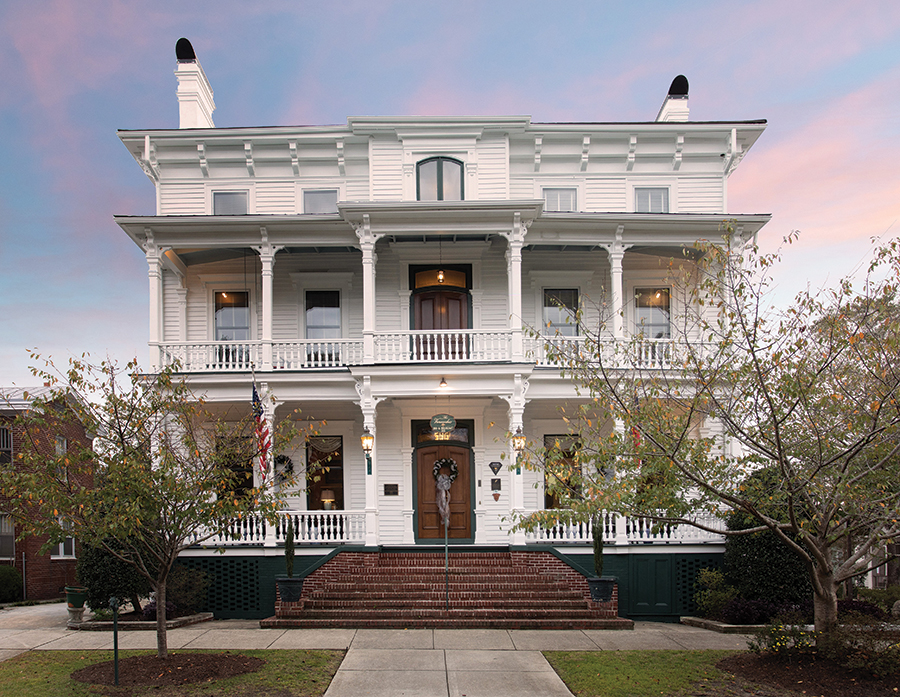
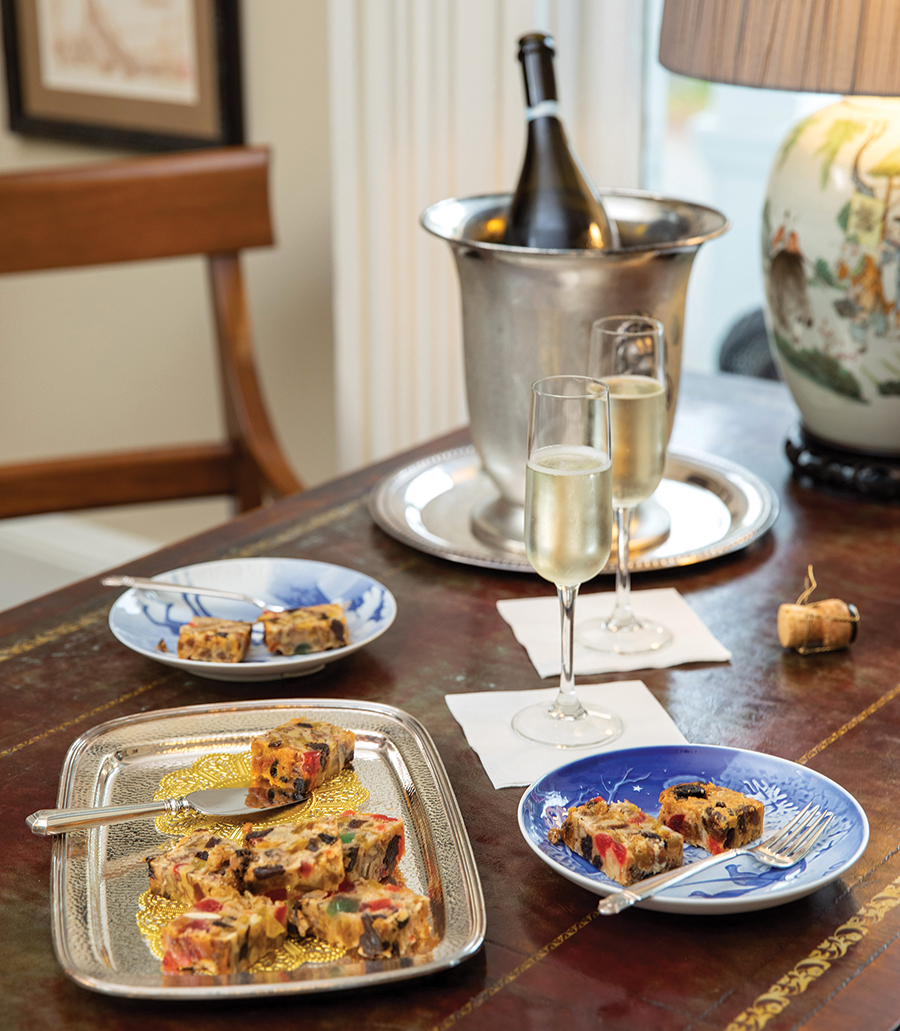
But the years after the Civil War saw a reversal of fortune. Benjamin Beery set fire to his own shipyard as the Yankees approached Wilmington. The house was used as a medical hospital during the war. After the city fell to the Union Army, Beery was taken into custody. Eventually, he was forced to sell 212 Nun Street to pay his many creditors. The Sisters of Our Lady of Mercy occupied the house in 1869-70, creating a convent and school that was the forerunner to St. Mary’s (hence Nun Street), making it the first Catholic school in North Carolina.
After a series of prominent owners, among them William Canaday, sergeant-at-arms of the U.S. Senate, by the 1920s the house had fallen into decline, mortgaged many times over and finally listed in city records as abandoned in 1947. By 1992 the house was in its sixth or seventh chapter as a boarding house, its owners renting rooms by the night for $5. As many as eight people shared rooms, sleeping on cots. “They were rooms with no board and bathrooms down the hall,” says Pennington. One evening, a tenant was hand-washing some clothes and left them on a space heater to dry, which started a fire. It burned uninterrupted for almost eight hours.
The house had been empty for three years when Pennington and Madsen first saw it in 1995. “It was a burned-out shell,” says Pennington. Windows were broken and covered in torn plastic, flapping in the wind; it was surrounded by a chain-link fence. But, he says, “I thought it was the most beautiful house I had ever seen.” They had to have it.
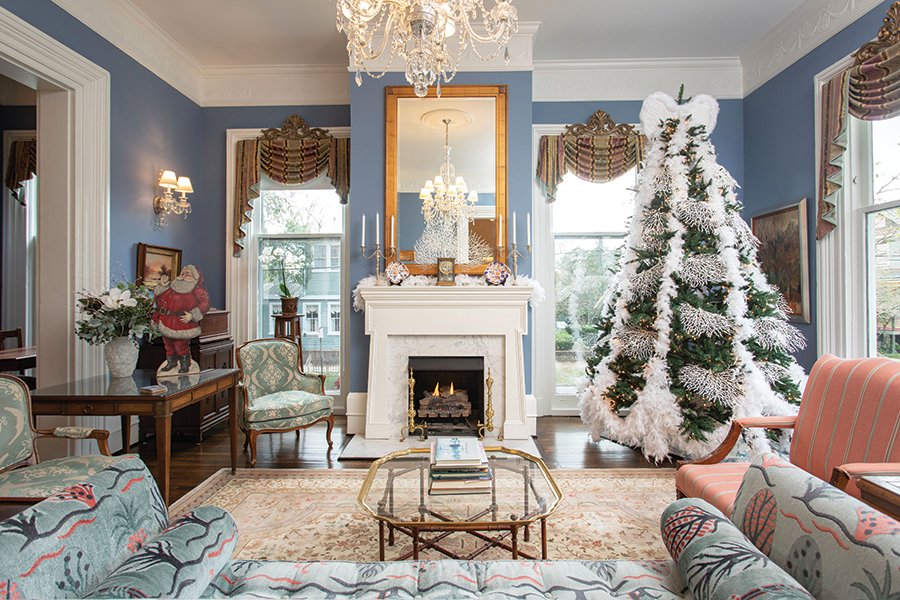

“The bank had no faith in us,” says Pennington, who notes that the contract for sale fell through on three different occasions. “It’s hard to believe now, but this was considered a dangerous neighborhood in 1995. There were seven empty houses on the block.” But they finally were approved. It was time for the hard work to begin.
When they finally took possession, their reward was a rabbit warren of rooms full of ruined and burnt furniture. “It was a disaster,” says Pennington. “Vagrants had stripped the house down to the switch plates.”
One of the grand parlor rooms on the first floor had been converted to an efficiency apartment with a stove. It took almost two years — till Valentine’s Day 1997 — before The Verandas was open to the public. Says Pennington: “We opened with four guest rooms and eventually expanded to the present-day eight.” And the final result was a showplace, an authentic re-creation of the Victorian splendor of the original. Most importantly, it created an engine for gentrification that defines the neighborhood today. And so it thrived for many years, winning every hospitality honor, including the coveted AAA 4-Diamond Award. Over the years, the surrounding neighborhood improved. The Riverwalk was built. Downtown was booming…
And then came a visitor named Florence.
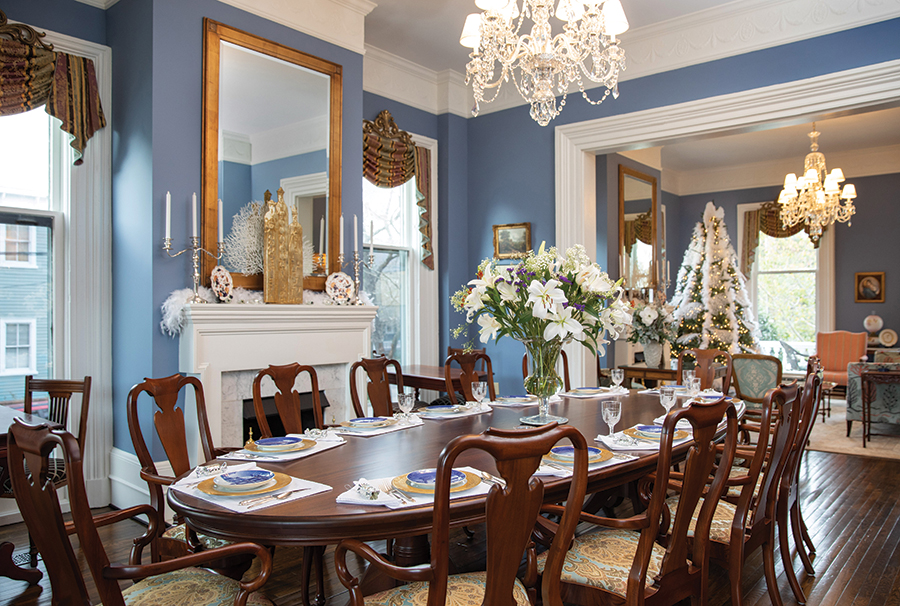
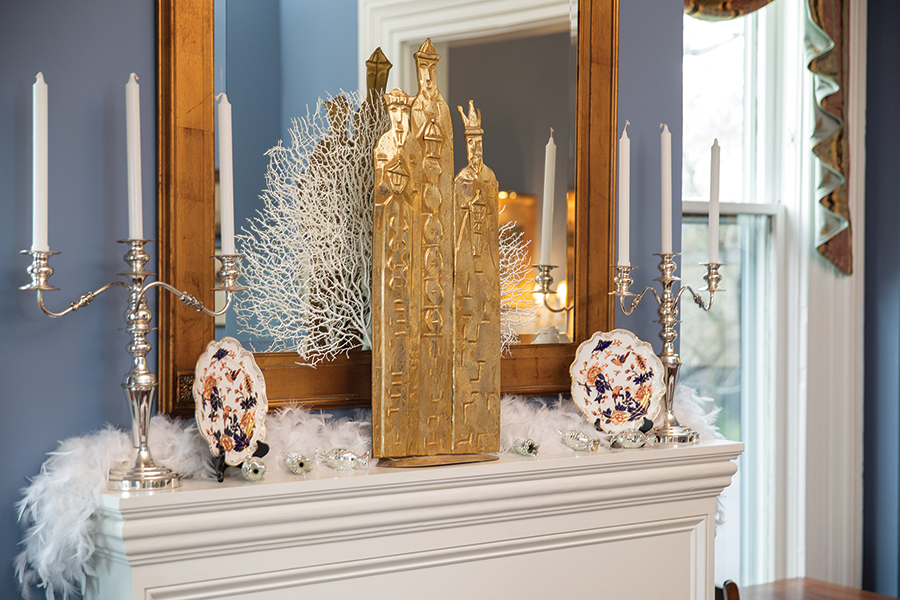
As the hurricane approached, Pennington made the decision to stay in the house in case something bad happened. “I was in the house and heard the tornado,” he says. “The front doors blew open and there was a crash. I went downstairs and saw that the ceiling in the dining room had water cascading through the chandelier.”
A huge 150-year-old elm tree in the back of the house had toppled, causing almost insurmountable damage: The falling tree broke the terrace, the fence and the neighbor’s roof. And then there were the roots: “The tree roots broke the brick stairs, 50 feet of retaining wall, both water lines, the sewage system, the underground electrical system, and about $10,000 worth of landscaping,” says Pennington. One of the 6-by-8-foot chimneys was blown into the house with such force that the legs of a bed in one of the guest rooms went though the floor. The chimney created an 8-by-20-foot hole in the ceiling; rain came pouring through the house for the next 10 days.
When it was all over, pretty much everything had to be replaced. New insulation. All furniture repaired and reupholstered. New terrace, landscaping, roof trusses, chimney. Plumbing, electrical, fire systems and alarms. “And at the end, we had 45 fans and 60 dehumidifiers running for six weeks,” Pennington gestures, sweeping his arm across the perfectly restored living and dining room parlor. “None of this could have happened without my general contractor, Steve Venters, who oversaw the entire project.”
And despite fires, hurricanes and tornadoes, and due to the unwavering vision of its owners, the house has survived, and thrived: “It was a lot of work and has taken 14 months so far. But I am real pleased with how it turned out.” b
William Irvine is the senior editor of Salt. His latest book, Do Geese See God? A Palindrome Anthology, is available on Amazon.
